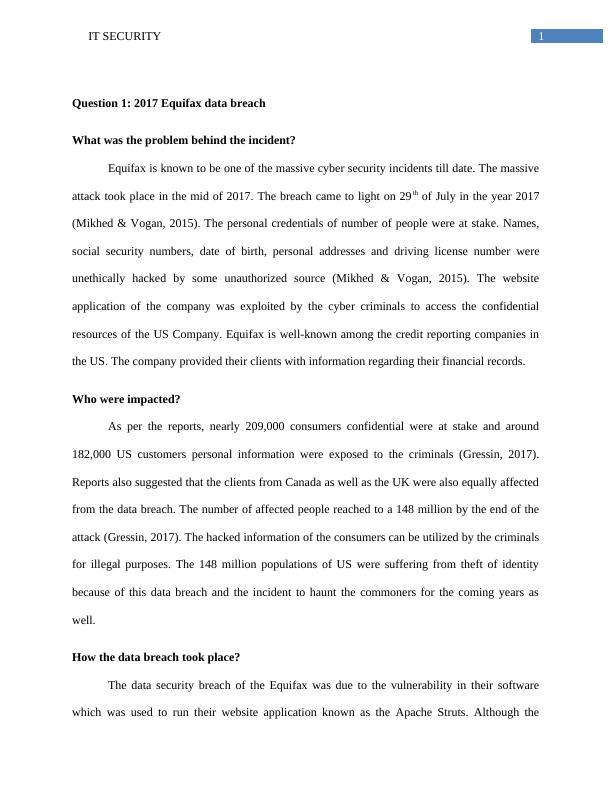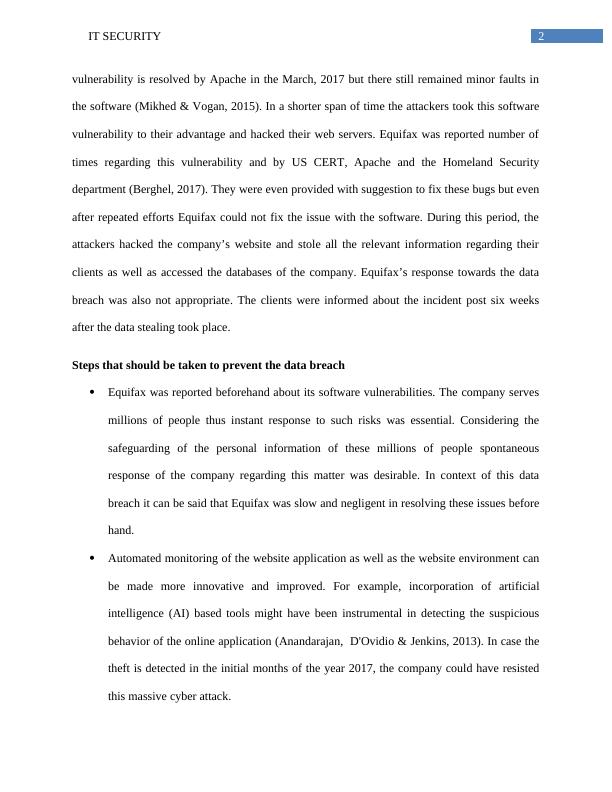IT Security: Equifax Data Breach, Quantum Key Distribution, and Firewall Types
12 Pages2997 Words59 Views
Added on 2023-06-14
About This Document
This article discusses the Equifax data breach, including the problem behind the incident, who was impacted, and how the data breach took place. It also explains the concept and mechanism of quantum key distribution (QKD) and the future trends of QKD. Additionally, it compares different types of firewalls, including packet filtering firewall, application proxy firewall, stateful packet filter firewall, and circuit level gateway firewall, and provides their functionality, speed, applications, and cost.
IT Security: Equifax Data Breach, Quantum Key Distribution, and Firewall Types
Added on 2023-06-14
ShareRelated Documents
End of preview
Want to access all the pages? Upload your documents or become a member.
Cybersecurity Threats Assignment
|5
|1057
|121
Data Breach Equifax
|12
|2129
|319
Equifax Data Breach of 2017: Overview, Impacts, and Recommendations
|10
|1970
|368
Equifax Data Breach: Incident Report and Analysis
|13
|4146
|67
Summary of Attack | Computer and Network Security
|7
|1353
|29
Equifax Data Breach of 2017: Overview, Causes, and Impact | Desklib
|13
|596
|118




